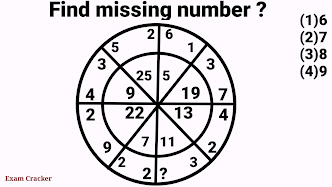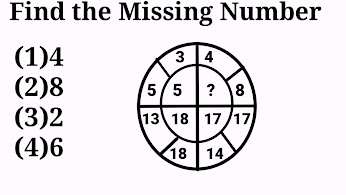Ten Latest tricky and logical Questions in box and circle reasoning for SSC CGL And SSC CHSL Exams
Ten Most Important tricky and logical Questions of Reasoning of box and circles problems with solutions are discussed in this post. . These types of problems are very helpful for cracking competitive exams like ssc cgl, ssc chsl and various Bank exams and many other similar exams .
Problem #1
This circle is divided into eight parts and each part is composed of three numbers . In each numbers are in outer part of the circle and one number is in the inner part of the circle. If we multiply both the numbers which are in the outer part of the circle and then add one to it then this resultant number will in the inner part of the opposite circle.
Problem # 2
1st Method
2nd Method
Problem # 3
Problem # 4
Taking the difference of two consecutive terms in clockwise direction and analyse the difference , this difference always increases with the increment of 4.
Problem # 5
Max (17,14) = 17 (Number in the inner part of the circle in 4th quadrant )
Max (18,13) = 18 (Number in the inner part of the circle in 3rd quadrant )
Max (5,3) = 5 (Number in the inner part of the circle in 2nd quadrant )
Max (4,8) = 8 = ? (Number in the inner part of the circle in 1st quadrant )
Problem # 6
Problem # 7
In 1st triangle
In 2nd triangle
In 3rd triangle
Problem # 8
Problem # 9
Problem # 10
ReasoningProblems #11
ReasoningAnalogy #10
Reasoning Questions #9
ReasoningProblems #11
ReasoningAnalogy #10
Reasoning Questions #9
Circle Reasoning #8
TenBox-Problems #7
TenReasoning problems #6
Ten-Important-Problem#5
Ten--Tricky-Puzzles #4
Twelve-Figures-Problems#3
Ten-Important-Reasoning#2
Picture-Reasoning#1
Ten Most Important tricky and logical Reasoning of box and circles problems with solutions were discussed in this post. . These types of problems are very helpful for cracking competitive exams like ssc cgl, ssc chsl and various Bank exams and many other similar exams . Feel free to share your opinion regarding this post in comment box.
Thanks


















No comments:
Post a Comment
Your valuable suggestions are always acceptable to us for betterment of this website